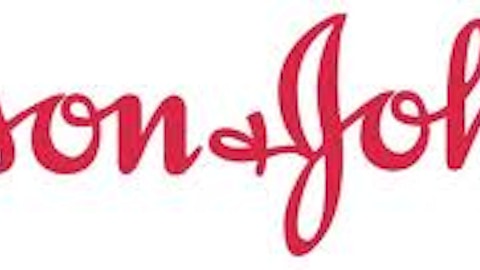
All of the above didn’t matter at all. Instead, analysts chose to focus solely on one metric: net revenue. Coke reported that net revenues declined 3% in the second quarter to $12.75 billion, missing analysts’ estimates by $200 million. And that became the talk of the day, sending shares of Coke tumbling by about 2%. To the company’s defense, the company’s CFO Gary Fayard responded that the cold and wet weather was the main cause of this unfortunate revenue miss. Apparently, less dehydrated people mean less need for Coke’s products.
The follies of short-term sight versus long-term wisdom
Earnings season is always a time of increased volatility. Everyone seems to get really excited over a company missing or beating estimates by 1%. This whole “guesstimate” game has turned into a national sport. To get some longer-term focus on the business, let’s turn to the holder of 400 million shares of The Coca-Cola Company (NYSE:KO). That person is Warren Buffett. Coke is the largest stock in Berkshire Hathaway Inc. (NYSE:BRK.A)’s portfolio. In the 2010 letter to shareholders, Buffett discussed Berkshire Hathaway Inc. (NYSE:BRK.A)’s love for The Coca-Cola Company (NYSE:KO) (the company, not the drink…). He stated that,
“Coca-Cola paid us $88 million in 1995, the year after we finished purchasing the stock. Every year since, Coke has increased its dividend. In 2011, we will almost certainly receive $376 million from Coke, up $24 million from last year. Within ten years, I would expect that $376 million to double. By the end of that period, I wouldn’t be surprised to see our share of Coke’s annual earnings exceed 100% of what we paid for the investment. Time is the friend of the wonderful business.”
And that’s precisely what happened. When Buffett first bought shares of The Coca-Cola Company (NYSE:KO), it paid less than 8 cents per share annually in dividends, yielding a modest 4%. But since then the company has grown its dividend by an incredible 1,300%, giving Berkshire Hathaway Inc. (NYSE:BRK.A) more than a 50% yield on his original investment today. I will be anything but surprised to see Berkshire, a few more years down the road, earning 100% on its invested capital in The Coca-Cola Company (NYSE:KO) each and every year. These results wouldn’t have been made possible if Buffett had sold out his position whenever The Coca-Cola Company (NYSE:KO) missed on revenues.
Sleep tight, Coca-Cola is behind you
There’s no reason for you to lose sleep of Coke’s revenue miss, and here is why:
- Every now and then, you might hear someone say he thinks PepsiCo, Inc. (NYSE:PEP) is a better business than Coke. And after all, Pepsi is always right on Coke’s heels, isn’t it? Well, not really, not from an investor’s point of view anyways. From 2009 to 2011, for every $1 of earnings it retained and reinvested in the business, Pepsi added $2 of market value. For every $1 Coke retained during the same period, Coke added $4 of market value. Another way to look at it is through margins. Whereas Pepsi’s operating margin and profit margin are 14% and 9%, respectively, Coke’s are 23% and 18%. There’s a reason for that. Coke is a better business. It is No. 1. Being the biggest is much more valuable than most investors realize.
- Coke isn’t only highly efficient with its cash but it’s also the most popular drink in the world. Coca-Cola Classic has been consistently ranked the top-selling soft drink in the world. Since 2011, its second place partner has been none other than Diet Coke. Pepsi Cola, on the other hand, only comes third. This means that by definition, The Coca-Cola Company (NYSE:KO) is the most successful in its industry. Odds are excellent it’ll continue being No. 1.
- Coke is extremely shareholder-oriented, while Pepsi is much less so. I always like to calculate what I coin “shareholder yield” by adding the total value of shares repurchased to the total value of dividends paid, as a percentage of cash flow from operations. In 2011, Coke paid $4.3 billion in dividends and bought back $2.95 billion of its shares. In 2012, Coke paid $4.6 billion in dividends and bought back $3.1 billion of its shares. This comes out to a “shareholder yield” of 76% and 72% for the years 2011 and 2012, respectively. Pepsi doesn’t even come close to these figures. In 2011, Pepsi paid $3.1 billion in dividends and bought back $2.9 billion of its shares. In 2012, Pepsi paid $3.3 billion in dividends and bought back $2.1 billion of its shares. This comes out to a “shareholder yield” of only 67% and 64% for the years 2011 and 2012, respectively. That’s a large difference in favor of the “Real Thing.”
The Foolish takeaway
The article What to Make of Coca-Cola’s Earnings originally appeared on Fool.com and is written by Shmulik Karpf.
Shmulik Karpf has no position in any stocks mentioned. The Motley Fool recommends Berkshire Hathaway, Coca-Cola, and PepsiCo. The Motley Fool owns shares of Berkshire Hathaway and PepsiCo. Shmulik is a member of The Motley Fool Blog Network — entries represent the personal opinion of the blogger and are not formally edited.
Copyright © 1995 – 2013 The Motley Fool, LLC. All rights reserved. The Motley Fool has a disclosure policy.



